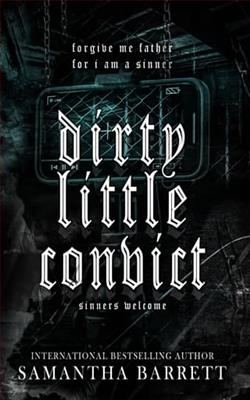Page 104 of Fourth Protocol
To the eternal grief of the four who were left out, Captain Lyndhurst decided to use only six assaulters. There would also be three snipers—two in the Adrians’ upstairs front bedroom and one on the hill overlooking the back garden.
The rear of 12 Cherryhayes Close would be covered by two of Lyndhurst’s six assaulters. They would be in full combat gear but their uniforms would be covered by civilian raincoats. They would be driven in an unmarked police car to Brackenhayes Close. Here they would disembark and, without asking permission of the householders, would walk through the front garden of the house that backed onto the stronghold, down the side path between house and garage, and into the back garden. Here they would strip off the raincoats, hop over the garden fence, and take up position in the back garden of the stronghold.
“There may be a trip wire in the garden,” warned Lyndhurst. “But probably close to the rear of the house itself. Stand well back. On the signal, I want one stun grenade straight through the window of the rear bedroom and another through the kitchen window. Then unclip the HKs and hold position. Do not fire into the house; Steve and the lads will be coming in the front.”
The rear-access men nodded. Captain Lyndhurst knew that he would not be in the assault. Formerly a lieutenant in the King’s Dragoon Guards, he was on his first tour with the SAS and held captain’s rank because the SAS have no officers under that grade. He would revert to lieutenant on return to his parent regiment in a year, though he hoped to come back to the SAS later as a squadron commander.
He also knew the tradition of the SAS, which is at variance with the convention for the rest of the Army: officers participate in combat in desert or jungle but never in an urban environment. Only NCOs and troopers carry out such assaults.
The main attack, Lyndhurst had agreed with his CO and the operations officer, would be via the front. A van would draw up quietly and four assaulters would step out. Two would take the front door, one carrying the Wingmaster, the other wielding a seven-pound sledgehammer and/or bolt cutters if necessary.
The instant the door came down, the assault front rank—Steve Bilbow and a corporal—would go in. The door squad would drop their Wingmaster and hammer, rip their HKs off their chests, and enter the hallway as backup for the first pair.
On entering the hallway, Steve would step straight past the stairs to the door to the sitting room on his left. The corporal would race up the stairs to take the front bedroom. Of the backup men, one would follow the corporal up the stairs in case Chummy was in the bathroom, and the other would follow Steve into the sitting room.
The signal for the two men in the back garden to hurl their stun grenades into the two rear rooms, kitchen and back bedroom, would be the crash of the Wingmaster at the front. By the time entry had been made, therefore, anyone in the kitchen or back bedroom should be reeling around, wondering what had hit him.
Preston, who had volunteered to return to the observation post, was allowed to listen to the details of the assault.
He already knew that the SAS was the only regiment in the British Army allowed to choose its weaponry from a worldwide menu. For close assault they had selected the German Heckler and Koch short-barreled nine-millimeter rapid-fire submachine gun—light, easy to handle, and very reliable, with an up-and-over folding stock.
They habitually wore the HK—loaded and cocked—slantwise across the chest; it was held in place by two spring-clips. This left their arms free for opening doors, entering through windows, or throwing stun grenades. When the weapon was needed, a single jerk brought the HK off the chest and into operation in less than half a second.
Practice had shown that to get through doors, it was faster to blast off both hinges rather than take the lock. For this purpose they favored the Remington Wingmaster pump-action repeater shotgun, but with solid heads rather than buckshot in the cartridges.
Apart from these playthings, one of the door squad would need a hammer and bolt cutters in case the door, having lost its hinges, was held on the other side by several bolts and a chain. They also carried stun grenades, designed to blind temporarily by their flash and deafen by their crack, but not to kill. Lastly, each man would have a thirteen-shot nine-millimeter Browning automatic on his hip.
In the assault, Lyndhurst stressed, timing was of the essence. For the hour of the attack he had chosen 9:45 p.m., when dusk would be deep in the Close but it
would not yet be darkest night.
Lyndhurst himself would be in the Adrians’ house across the way, watching the target house and in radio contact with the van bearing his assaulters. Thus he could monitor the approach of the team. If there were a pedestrian moving down the Close at 9:44, Lyndhurst could tell the van driver to hold until the passerby had cleared the door of the stronghold to be assaulted. The police car bringing the two rear-garden men to position would be on the same wavelength, and would drop those two men ninety seconds before the front door came down.
Lyndhurst planned one last refinement. As the assault van cruised up the Close, he would telephone Ross from the Adrians’ house across the road. He already knew that the phone in each of these houses was kept on a small table in the hallway. The ploy was to distance the Soviet agent from his bomb, wherever it was, and to give the assaulters the chance of a fast shot.
Firing, as usual, would come in two fast bursts of two shots each. Although the HK can empty its thirty-round magazine in a couple of seconds, the SAS are accurate enough even in the confused conditions of a terrorist-hostage situation to limit their firing to two-shot bursts, with one repeat. Anyone stopping those four rounds will speedily feel very unwell. Such economy also keeps the hostages alive.
Immediately after the operation the police would move into the Close in strength to calm down the inevitable crowd that would come pouring out of the adjacent houses. A police cordon would be thrown around the front of the target house, and the assaulters would leave through the rear, cross the gardens, and board their van, which by then would be waiting in Brackenhayes Close. As for the interior of the stronghold, the civil authority would take over there as well. A team of six from Aldermaston was due into Ipswich by teatime that evening.
At six, Preston left the holding area and returned to the observation post—the Adrians’ house—which he entered, unobserved, by the rear door.
“Lights have just come on,” said Harry Burkinshaw when Preston joined him in the upstairs bedroom. Preston could see that the sitting-room curtains of the house opposite were drawn, but there was a light behind them and a reflected glow showing through the panels of the front door.
“I think I saw movement behind the net curtains in the upstairs bedroom just after you left,” said Barney. “But he didn’t put the light on—well, he wouldn’t, of course. It was just after lunch. Anyway, he hasn’t come out.”
Preston radioed Ginger on his hillside, but the story was the same. No movement at the back, either.
“It’ll start getting dark in a couple of hours,” Ginger told him over the radio. “Vision will deteriorate after that.”
Valeri Petrofsky had slept fitfully and not well. Just before one o’clock he awoke fully, propped himself up, and stared across his bedroom, through the net curtains, at the house across the way. After ten minutes he hauled himself off the bed, went to the bathroom, and showered.
He made lunch at two o’clock and ate it at the kitchen table, occasionally glancing into the back garden, where a fine and invisible fishing line ran from side to side, around a small pulley attached by night to the garden fence, and in through his back door. It was tied around the bottom of a column of empty tin cans in the kitchen. He slackened the tension when he was out of the house and tightened it when he was at home. No one had yet brought the tins clattering down.
The afternoon wore on. Not unnaturally, considering what reposed, armed and primed, in his sitting room, he was tense, all his senses at full alert. He tried to read but could not concentrate. Moscow must have had his message for twelve hours by now. He listened to some radio music, then at six settled down in the sitting room. Although he could see the sun reflected in the windows of the houses opposite, his own house faced east, so it was now in shadow. The twilight would deepen in his sitting room from now on. He closed the curtains, as ever, before putting on the reading lamps; then, for want of anything better to do, switched on the television news. As usual, it was dominated by the election campaign.
In the warehouse holding area, the tension was mounting. Final preparations were being made to the assaulters’ van, a plain gray Volkswagen with a sliding side door. Two men in plainclothes would be in the front, one driving and the other on the radio to Captain Lyndhurst. They checked those radios over and over again, as they tested every other piece of equipment.
The van would be led to the entrance to The Hayes by an unmarked police car; the driver of the van had memorized the geography of The Hayes and knew where to find Cherryhayes Close. As they entered The Hayes, they would come under the radio control of Captain Lyndhurst in his observation post. The rear of the van had been lined with polystyrene-foam sheeting to prevent the clink of metal on metal.















